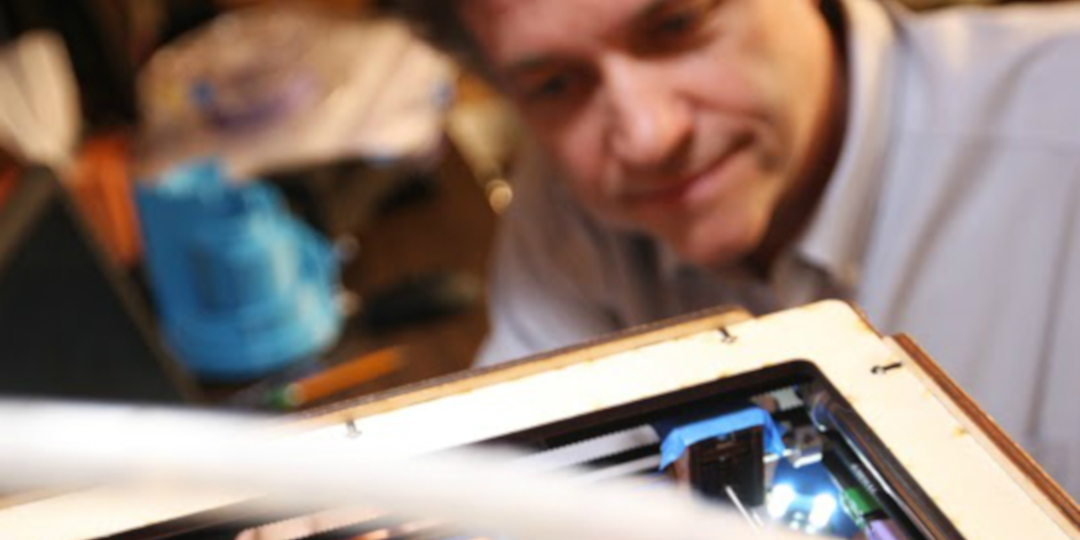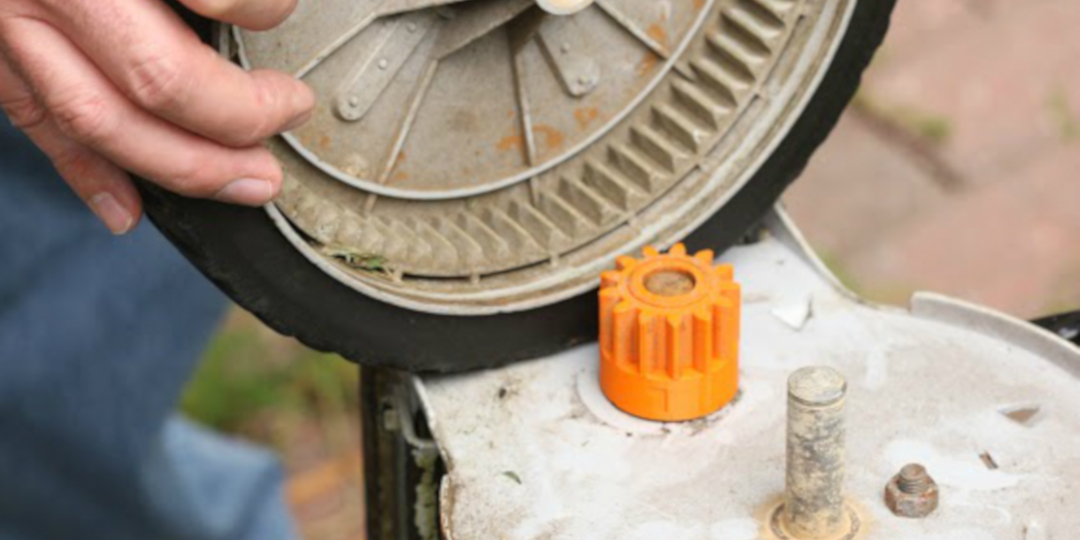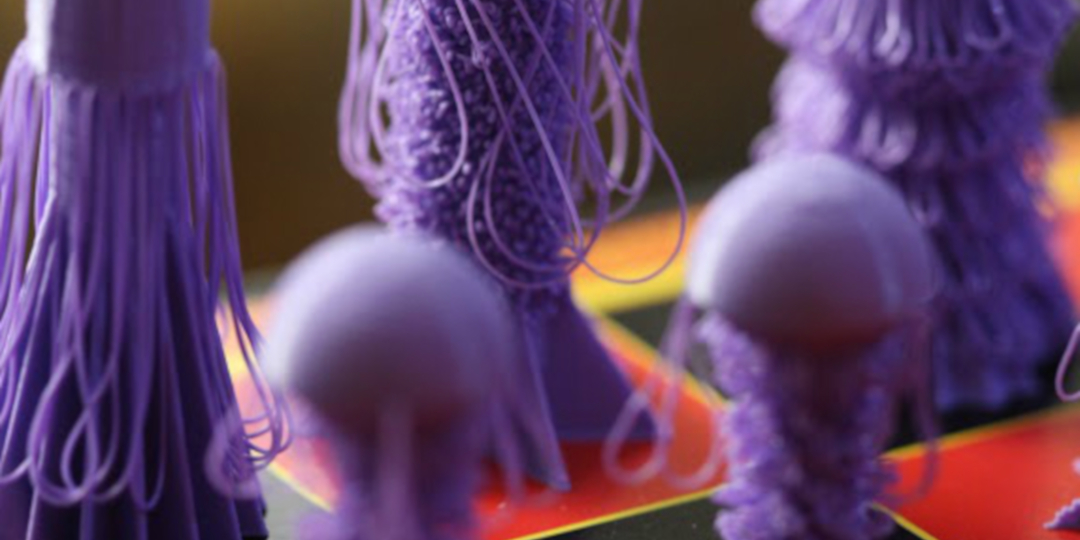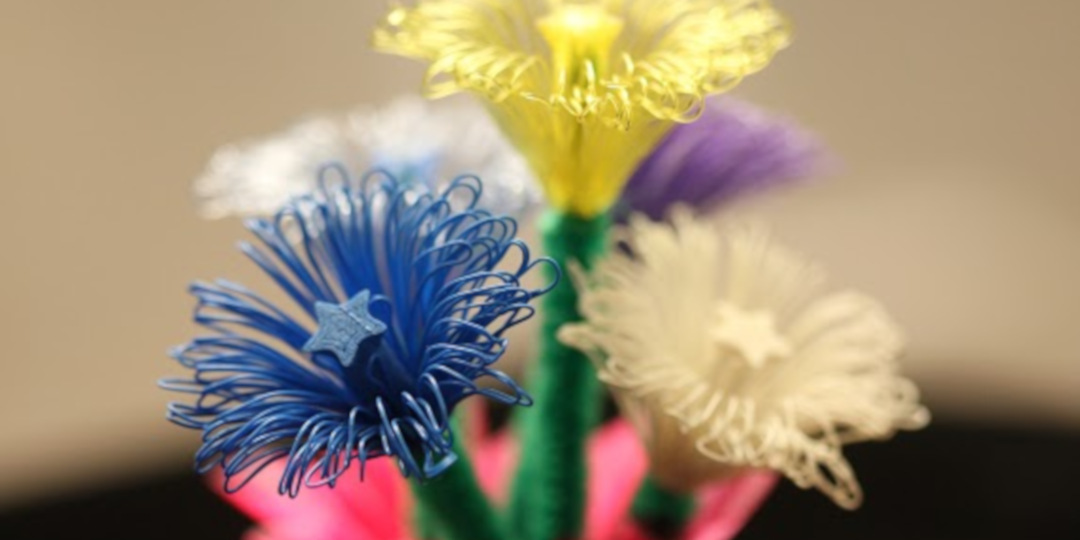3D printing fuels creativity and enhances problem solving when students get to see, hold, and test their ideas in real life. But what is it actually like to have a 3D printer in the classroom? Mark Peeters, the 3D print artist, Technology Director at Comstock Public Schools in Kalamazoo, Michigan, USA, and active contributor to our community, is here to share his experience.
Meet Mark, the Magician
Mark has been working in K-12 public education since 1991. In 2013, he was chosen to lead the development of a 3D printing curriculum and became a special in-house expert in 3D printing. With diverse mechanical skills, deep love of mathematics, and basic understanding of design tools, Mark could get three 3D printers up and running for the start of the school year. Since then, he has been collaborating with teachers to develop 3D printing lessons and activities for K-12 students.
Mark Peeters working in his lab
In 2014, Mark saw the need to jumpstart others’ success in 3D printing by offering Ultimaker Original+ 3D printing build workshops for schools, youth clubs, small businesses, basement tinkerers, etc. As Mark says, “These workshops are designed for a team of 1-3 people (tech/educators/helpers) because I strongly feel 3D printing in schools works best as a team effort.”
Bringing the first 3d printer to the classroom
For Mark, bringing their first 3D printers into the classroom wasn't hard, but it did require a lot of time upfront. What he had to learn was:
Luckily, he had about two months to prepare. They were opening a brand new K-5 school and they wanted to bring the reality of 3D printing to all the students by giving them an object that was 3D printed to take home. This way, it would become a tangible part of their everyday life. Mark worked hard trying to find just the right thing to print. It had to be easy to print due to time constraints, but Mark also wanted it to look cool to children. He made a trilobite model that turned out to be a big success. The students really liked the trilobites and became genuinely excited about 3D printing.
I have been pleased to witness how engaged students become in engineering, art, and mathematics when the final product is their own 3D printed object.
The first lesson
Mark made his first 3D printing lesson extremely simple. The kids had to create their own personalized rings. And there were several reasons for that:
to be able to use the same K-5 lesson
to make it possible to complete it in a single 45-minute session in the computer lab
to have kids leave the class with their own 3D printed object
to make children see their own hand in the final printed object
Mark started with the 4th graders and then moved on to the 2nd, 3rd and 5th grade classrooms. With the expert advice of the teachers, they decided that for the 1st grade and Kindergarten kids they would use the 4th grade kids as a tech buddies to help them with the lesson.
This lesson was a good place to start since none of us had ever done 3D printing. I learned a lot about organizing files and printing. The students learned a lot about manipulating a 3D view, downloading and naming files, using the discussion forum and creating a unique object in PLA to take home.
Today, there are seven 3D printers in Comstock Public Schools. Mark has helped other school districts get started with 3D printing by assisting with the building of Ultimaker Original+ kits. And even now, Ultimaker Original+ remains Mark’s favorite machine for many reasons.
As for materials, Mark only prints in PLA, since:
it is biodegradable
it does not release toxic fumes when printing
it does not require a heated bed
it still strong enough for any of the jobs he needs
Mark has actually replaced the clutch gears on his reel lawn mower using PLA and they outperform the original parts.
The most exciting projects
I really like all the projects I do with the kids because I have intentionally built in openness for the students to create something personal, and it’s very fun to see what each student comes up with. At the top of my list would be projects where students were allowed the most freedom.
One of the projects that Mark really enjoys is at the high school level where they have teams of 3 kids design chess sets. The only constraints are that the six pieces should match visually and that they fit a standard sized chess board. "It is great to see how these simple requirements of size and form yield a wide range of interesting chess sets. Students learn when they need support for printing and when to actually change the design or break up the object for post-printing assembly,"Mark says.
Another Mark’s favorite is the Ultimaker Gumball Capsule Challenge he won this year. Once again, students had a very open-ended project with the extra motivation that their objects would be seen and judged by an audience outside of the school.
Educational drooloop projects
And of course, customizable drooloop flowers! A drooloop is Mark’s special term to describe a more artistic way of using filament while printing. Instead of building each layer on a solid foundation, 3D printer spits out plastic into mid-air creating flowing and organic looking strings of material. Mark can tweak angles, speed, and other variables to produce diverse and surprisingly amazing results. Be sure check out the detailed drooloop print guide here.
What’s next?
With a desktop 3D printer, teachers can empower their students to design, collaborate, and create amazing things they never thought possible. We’ll continue exploring the many ways 3D printing can enhance education. Stay tuned!


























